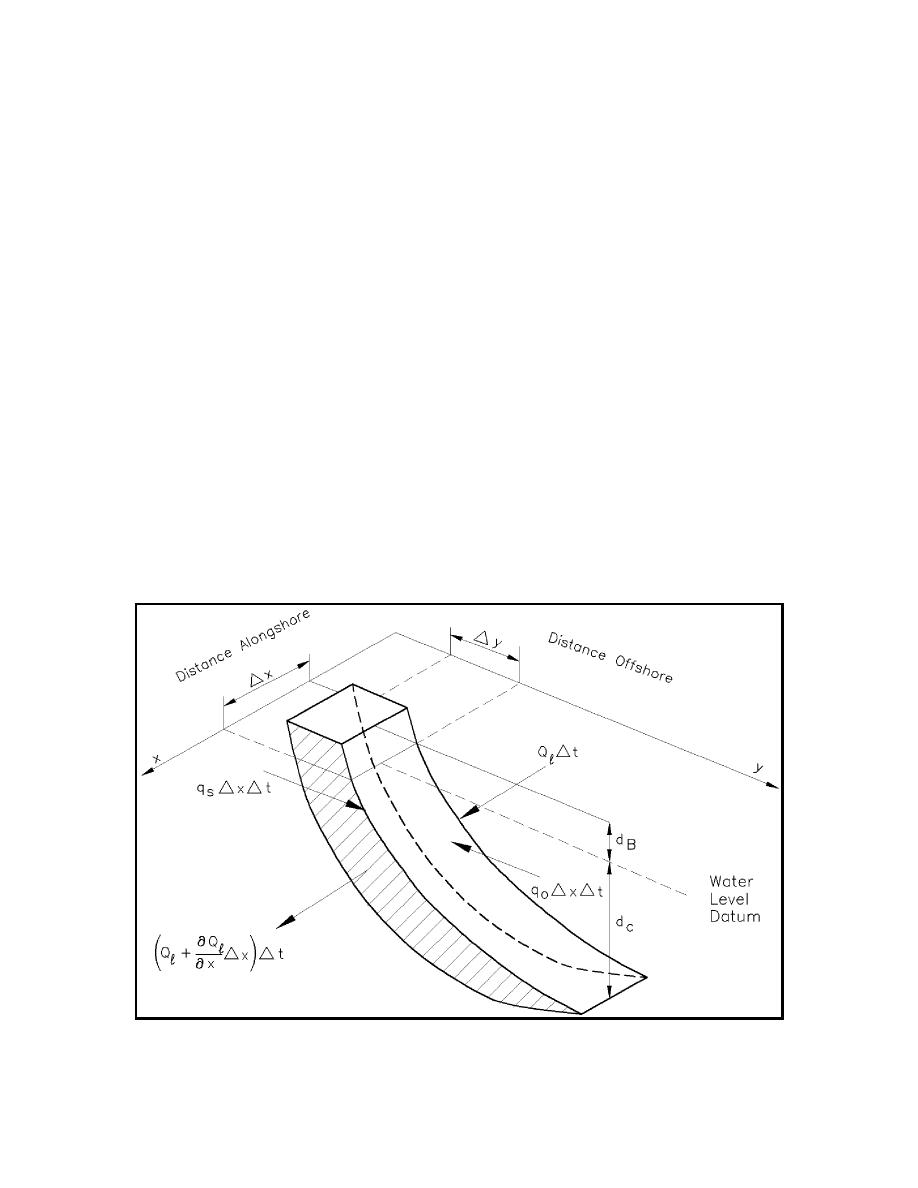
EM 1110-2-1100 (Part III)
30 Apr 02
Additionally, Equation 2-24 is intended for application for β # θ # 180E, and assumes that a predominant
wave direction exists at the site of interest. The latter is often not the case in nature, and so engineering
judgement must be utilized in practical application of this method. For θ > 180E, the distance R may be
assumed to be constant and equal to the value of R computed at θ = 180E.
(5) Additional empirical guidance on shoreline change at seawalls is provided in Walton and
Sensabaugh (1979) where additional localized recession at a seawall under a storm condition (hurricane
Eloise along the Florida panhandle), is provided. Similar guidance for other storms and other locations is not
available, although McDougal, Sturtevant, and Komar (1987) and Komar and McDougal (1988), have
reported similar findings at laboratory scales.
(6) The approach(es) outlined above may be useful for rough, preliminary calculations and estimates
of "static" shoreline equilibriums when the assumptions necessary for application of the approaches are
fulfilled, where detailed dynamics of the changing shoreline are not sought, and where time and/or budget
constraints preclude a more detailed approach. For detailed prediction of shoreline change due to longshore
gradients in sand transport or otherwise complicated geometries, a preferred approach would be to utilize a
physical model and/or a numerical model, as appropriate to the scale of the study area.
j.
Analytical longshore sand transport shoreline change models.
(1) If the angle of the shoreline is small with respect to the x axis and simple relationships describe the
waves, analytical solutions for shoreline change may be developed. As an example, utilizing the expression
provided in Equation 2-7b for longshore sediment transport along with the assumption that the breaking wave
angle αb is small, the following planform shoreline change equation can be derived utilizing the coordinate
system given in Figures III-2-28 and III-2-29:
Figure III-2-28.
Elemental volume on equilibrium beach profile
III-2-56
Longshore Sediment Transport


 Previous Page
Previous Page
